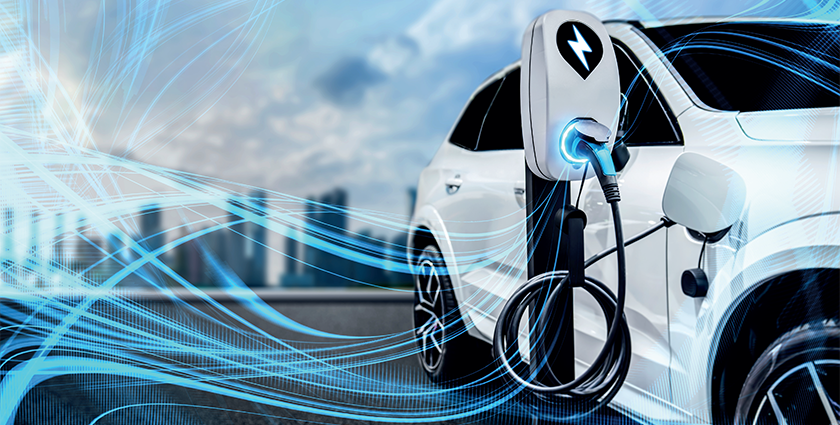
Keep an open mind
Electric ‘pure plays’ are prominent on the automotive scene but traditional automakers, too, are putting battery electric vehicles (BEVs) at the center of their strategies. This makes sense in the context of growing stakeholder pressure for sustainability and already-strong consumer demand for BEVs.
However, this article will show that many questions remain around electrification. Some are about how best to achieve it; I’ll explain why success in this area goes far beyond just manufacturing excellent BEVs. I’ll also try to show that the more we widen our view of sustainability, the better our decisions will be.
Battery issues
When thinking about sustainability, it’s easy to fixate on details. For instance, there’s an ongoing quest for alternatives to today’s lithium-ion batteries that will make better use of energy and scarce minerals. Solid-state batteries are a current R&D focus, and may appear in premium markets in the next few years, according to some experts.
This is valuable research, partly because batteries represent a significant proportion of the cost of a BEV and, in my opinion, will continue to do so for the foreseeable future barring a surprise technological breakthrough.
From a sustainability perspective, though, the technological context is arguably even more important. It’s vital to optimize the electric ‘powertrain’ that integrates the electric engine into the vehicle. The key here is software – and effective software-based battery management can make a big difference to battery performance.
Battery sustainability depends not just on performance but on lifetime impact, from production to recycling or disposal. Battery design – like the design of the vehicle as a whole – must facilitate reuse, especially of scarce materials.
Is battery swapping the way to go?
A few brands are exploring swapping pre-charged batteries into cars on the road to avoid the need for drivers to wait while a fixed battery charges. However, this option relies on an infrastructure of battery swap shops, which probably implies battery standardization if the infrastructure is to scale beyond a single company. With battery technology still evolving rapidly, perhaps it’s too early to freeze development by imposing a standard. And, in the meantime, advances in battery charging may weaken the case for swapping… another tricky decision for manufacturers.
Other BEV issues
Of course, there’s more to BEV success than battery sustainability. Along with price, cost, and availability, a major success factor will be customer experience, not least in relation to charging. Discussion to date has focused on questions about range and charging time, but what about the way the charging process feels to the customer? There’s a huge difference between wrestling with a heavy charging cable and simply driving your car onto an induction charging pad – something we’ll increasingly see.
Charging infrastructure, too, will be critical, and there are a variety of ways for automakers to influence its development, from building their own charging stations to partnering with specialists. ‘Charging-as-a- Service’ also brings opportunities for these companies.
Beyond BEVs
Nor are BEVs the only answer to electrification. Hydrogen fuel cells are candidates for powering heavy commercial vehicles such as trucks. Despite intrinsic logistical disadvantages, hydrogen brings practical advantages where batteries would have to be prohibitively bulky and heavy.
Electrification won’t be appropriate for all regions, anyway – for example, in parts of Africa, South America, and Asia, geo-economic conditions will make it difficult to establish the necessary infrastructure. Here, the most sustainable option may be conventional internal combustion engine vehicles powered by alternative fuels. While biofuels are problematic, there may be opportunities to convert biowaste into synthetic fuels using renewable energy to power the process.
Holistic view of sustainability
We need to remember that the real aim is sustainability, not electrification – and sustainability is about much more than the vehicle. Optimization of the manufacturing process is vital too; an Intelligent Industry approach can improve both sustainability and performance.
Automakers are also evaluating new business models that could increase sustainability. For example, mobility services could enable customers to seamlessly combine private vehicles with public transport, bicycle hire, and so on to reach their destination with minimal environmental impact. And simply helping customers to share their cars with others when not in use may reduce the number of vehicles needed.
Automotive companies face many decisions around electrification. The best way to make those decisions is within a holistic sustainability perspective: one that takes account of the whole vehicle lifecycle – including circular economy issues about maintenance, reuse, and recycling – and that considers transportation in the widest sense. And, of course, all of these considerations need to be seen in the context of the company’s strategy and target markets, and balanced against traditional objectives such as profitable growth.
In navigating this complex journey, it’s vital to keep an open mind about technological innovations, considering not just electrification but anything that may – whether sooner or later – contribute to a more sustainable society. v
For a list of the sources used in this article, please contact the editor.
 Markus Winkler
Markus Winkler
Markus Winkler is Executive Vice President of Global Automotive at Capgemini. Capgemini is a global leader in partnering with companies to transform and manage their business by harnessing the power of technology. The Group is guided everyday by its purpose of unleashing human energy through technology for an inclusive and sustainable future. It is a responsible and diverse organization of over 340,000 team members in more than 50 countries. With its strong 55-year heritage and deep industry expertise, Capgemini is trusted by its clients to address the entire breadth of their business needs, from strategy and design to operations, fueled by the fast evolving and innovative world of cloud, data, AI, connectivity, software, digital engineering and platforms.
www.capgemini.com/gb-en